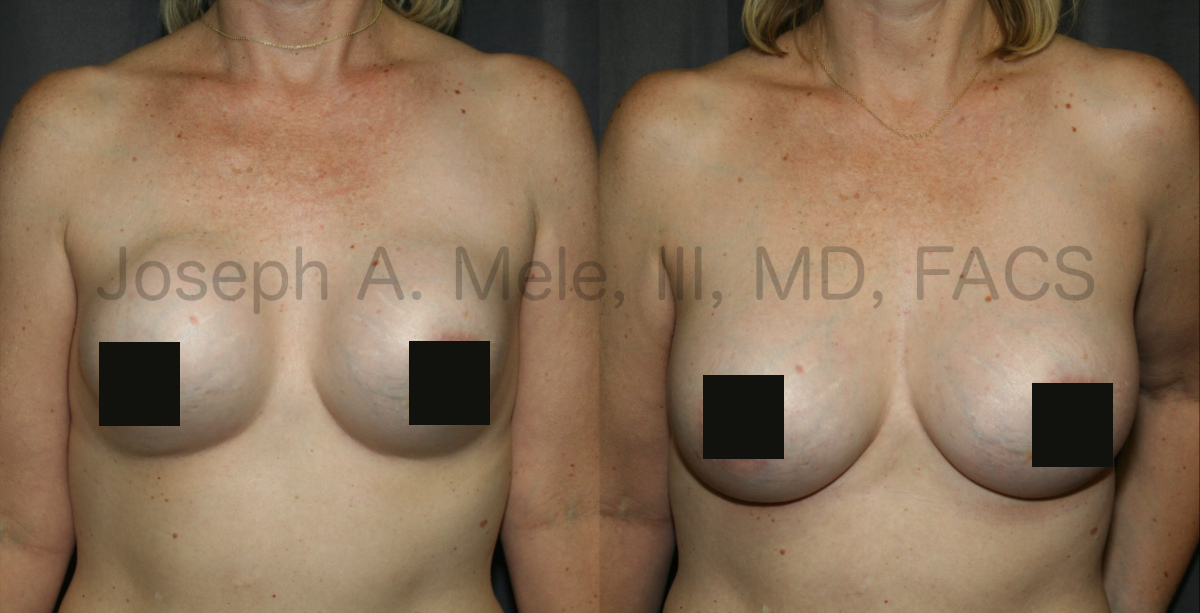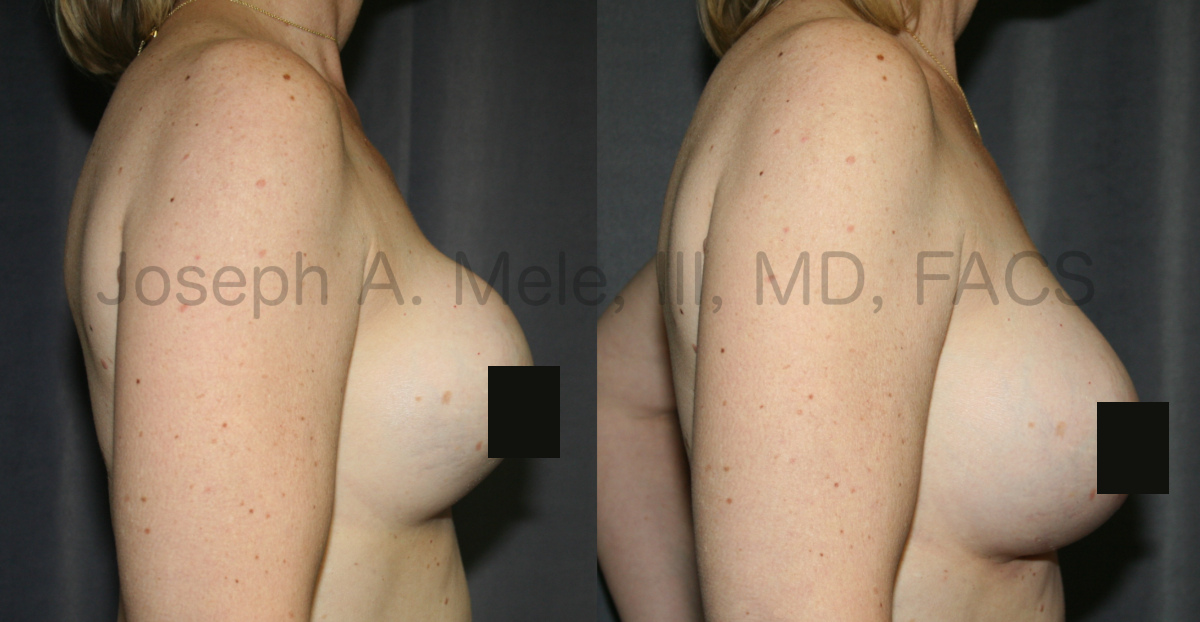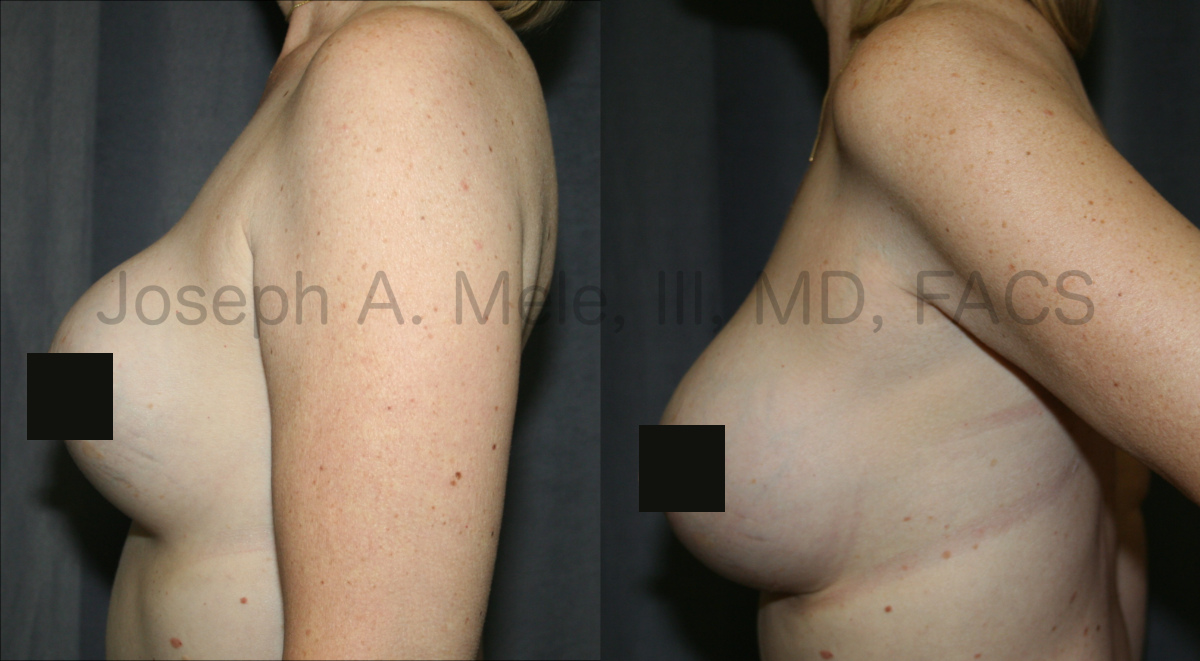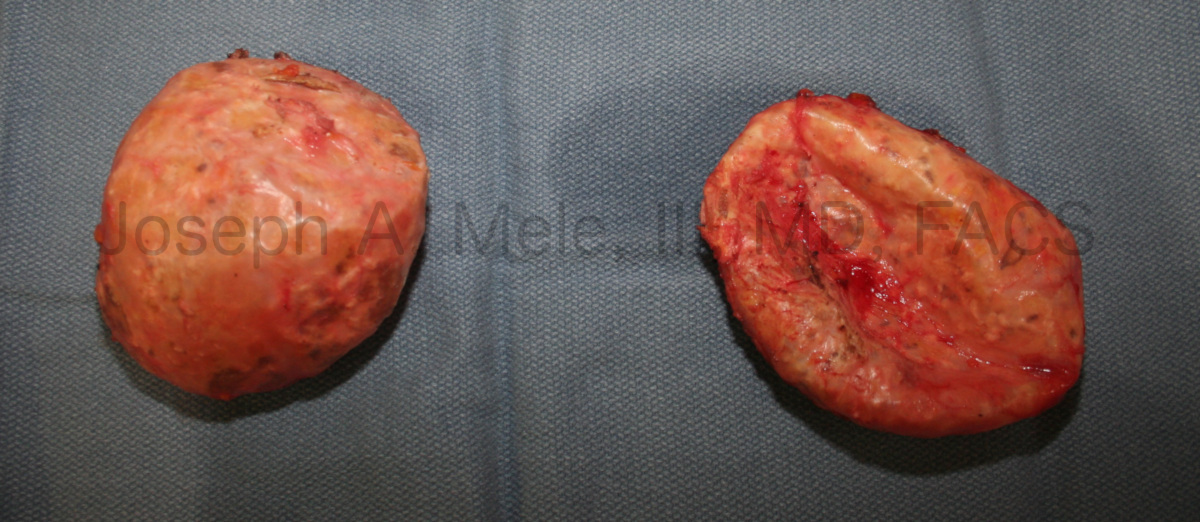Capsular Contracture accounts for about one third of all Breast Augmentation Revision surgeries. But what is Capsular Contracture? How can it be prevented, and how is it treated?
What is a Capsule?
Before we discuss Capsular Contracture, it is important to know some facts about capsules. Whenever any object is placed in the body, the body forms a capsule around it. Whether it’s a pacemaker, or a cosmetic implant, the body forms a layer of scar around the object to stabilize it. Capsule formation is important in two ways: it stabilizes the implant (keeps it in its place) and it supplies additional blood vessels to prevent infection.
Breast Implant Revision Surgery
Normally, the capsule around a Breast Implant is soft. This is a function of the capsule remaining thin and the pocket remaining slightly larger than the implant it secures. The Breast Revision Before and After Pictures below show what happens when the capsule becomes too tight.

Breast Implant Revision Surgery is used to treat capsular contracture. These before and after pictures of Breast Revision Surgery show the typical high and tight breast implants seen with capsular contracture before revision, and soft, well placed breast implants after revision. (For an uncensored view, click on the picture.)
The before picture on the left above shows breast implants that are pushed up the chest by tight capsules. The diameters of the implants are reduced, making them appear too small for this patient’s chest. They are also firm and immobile to touch. In the worst capsular contracture scenario, the breast(s) can become tender and even painful. For the patient above, capsular contracture affected both sides, but often the involvement is asymmetrical and only one side may be involved.
Capsular Contracture Side Views
In this side view, the breast shape looks up-side-down. As the capsule contracts, the power pole tightens not only raising the implant, but also flattening the breast mound. Gradually, the breasts become more firm until they become hard and immobile. Once a capsule this tight has formed, surgery is the only option for correction.

The extent of the deformity caused by this patient’s capsular contracture is more easily seen on these before and after pictures of her side view. The breast implant is high because the tightness of the capsule is compressing the lower pole of the breast implant. In the after picture the capsular contracture is corrected and the breast resumes its more natural shape. (For an uncensored view, click on the picture.)
Mild capsular contracture has been treated with exercise, steroids, ultrasound and other medications with variable results. Methods unlikely to cause new problems are worth trying, but sometimes the problem continues to progress. When the problem moves from palpable to visual, usually surgery is required for correction.

These before and after pictures of her left side show the shape of the breast is inverted in the before picture, with a round top and a tapered lower pole that meets the abdominal wall at an obtuse angle. The after photo shows the corrected tear-drop shapped breast with a taped upper pole and a round bottom. Breast Implant revision surgery changed the previously tight, hard breasts into soft, mobile breasts. (For an uncensored view, click on the picture.)
Capsulectomy vs. Capsulotomy
The two types of surgical interventions utilized for treating capsular contracture are Capsulotomy and Capsulectomy; these represent dividing the capsule and removing the capsule respectively. The following pictures are of the contracted capsules, which were completely removed via a Capsulectomy. They were removed intact, with the implants, including any free silicone that may have leaked.
Fortunately, today’s newer breast implants (gummy bear implants) are made with a strong, highly cohesive gel which is more easily removed. Older implants were filled with silicone oil, which tended to migrate outside the capsule, in some cases, even with intact breast implants.

Above are the capsules that surrounded the breast implants before the above breast revision surgery. The whitish color comes from the tough collagen fibers that make up the capsule. These capsules were about half the size of the implants that they surrounded, explaining the small and firm appearance of the breasts before the capsulectomies. (For a side view, click on the picture.)
Breast Augmentation Revision Surgery Consultations
Breast Augmentation Revision is often more challenging than the original Breast Augmentation surgery. Whether you have capsular contracture or other issues with your breast augmentation, choose an experienced Board Certified Plastic Surgeon to learn about your revision options. In the San Francisco Bay Area call (925) 943-6353 to schedule a private consultation today.
Previous Post Next Post